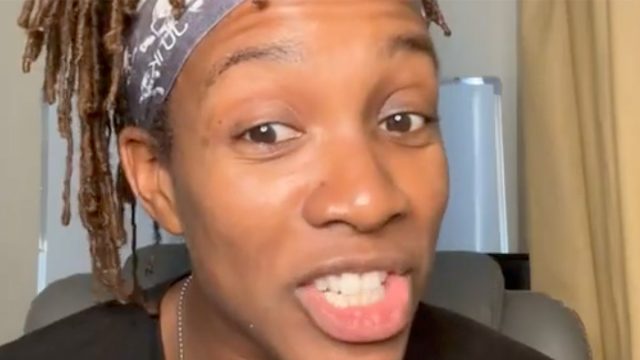Fat Loss Expert Reveals the 4 Mistakes Keeping You Fat

Do you feel like you are eating healthy but can't seem to get rid of fat? One expert maintains that you could be making a common mistake with sugar. Cherisse Kozloski is a nutrition coach and personal trainer who helps her clients lose weight and keep it off. In a new Instagram post, she discusses some of the faux pas she made that got in the way of her own fat loss. "I was holding on to most of my fat in my tummy and hips until I stopped making these 4 mistakes with sugar," she writes.
Spot Reducing Is a Myth
Before she gets into the tips, she issues a reminder. "1st remember spot reducing is a MYTH. You will lose fat from all over when you're in a fat loss phase," she says.
RELATED: 8 High-Protein Foods with Nearly Zero Calories That Melt Fat
Drinking Your Sugar
Drinking your sugar is the first mistake. "Sugary drinks like soda, juice, and lots of Starbucks drinks flood your body with sugar, spiking your blood sugar and as a result the excess calories are stored as fat," she says. What should you do instead? "Switch to unsweetened options like sparkling water, black coffee, or herbal teas. If you want flavor, add lemon, mint, or a splash of almond milk to keep it low-sugar," she says.
Relying on Low-Fat Snacks
Mistake two? Relying on 'low-fat' snacks. "Many 'low-fat' or 'diet' products replace fat with sugar to keep them tasty. This sneaky sugar can get stored as fat," she says. "Ditch processed snacks and choose whole foods like nuts, seeds, or fresh fruits. These keep you fuller longer without the sugar spikes."
Overconsuming "Healthy" Sweeteners
Her next mistake is overeating 'healthy' sweeteners like honey or agave. "Just because it's 'natural' doesn't mean it's calorie-free. Honey, agave, and maple syrup can still lead to fat storage if you overuse them," she says. "Treat natural sweeteners like sugar—use them sparingly. Limit to 1-2 teaspoons per day if fat loss is your goal or try zero calorie versions like monk fruit or stevia."
Skipping Protein and Fiber
Her final mistake? Skipping protein and fiber when eating sugary treats. "Sugar without protein or fiber causes your blood sugar to spike and crash, making you crave more sweets later. It's a cycle that's hard to break!" she says. "When you want a treat, pair it with protein (like a boiled egg or chicken ) or fiber (like veggies or chia seeds). This slows sugar absorption and keeps you feeling fuller longer."
RELATED: 20 Foods You Didn't Know Were Ultra-Processed
Do Your Research
The bottom line? "The key to getting control of your sugar is knowing where it's hiding. Once you are more away you can be in control of your choices," she writes. And if you enjoyed this article, don't miss these 8 High-Protein Foods with Nearly Zero Calories That Melt Fat.




